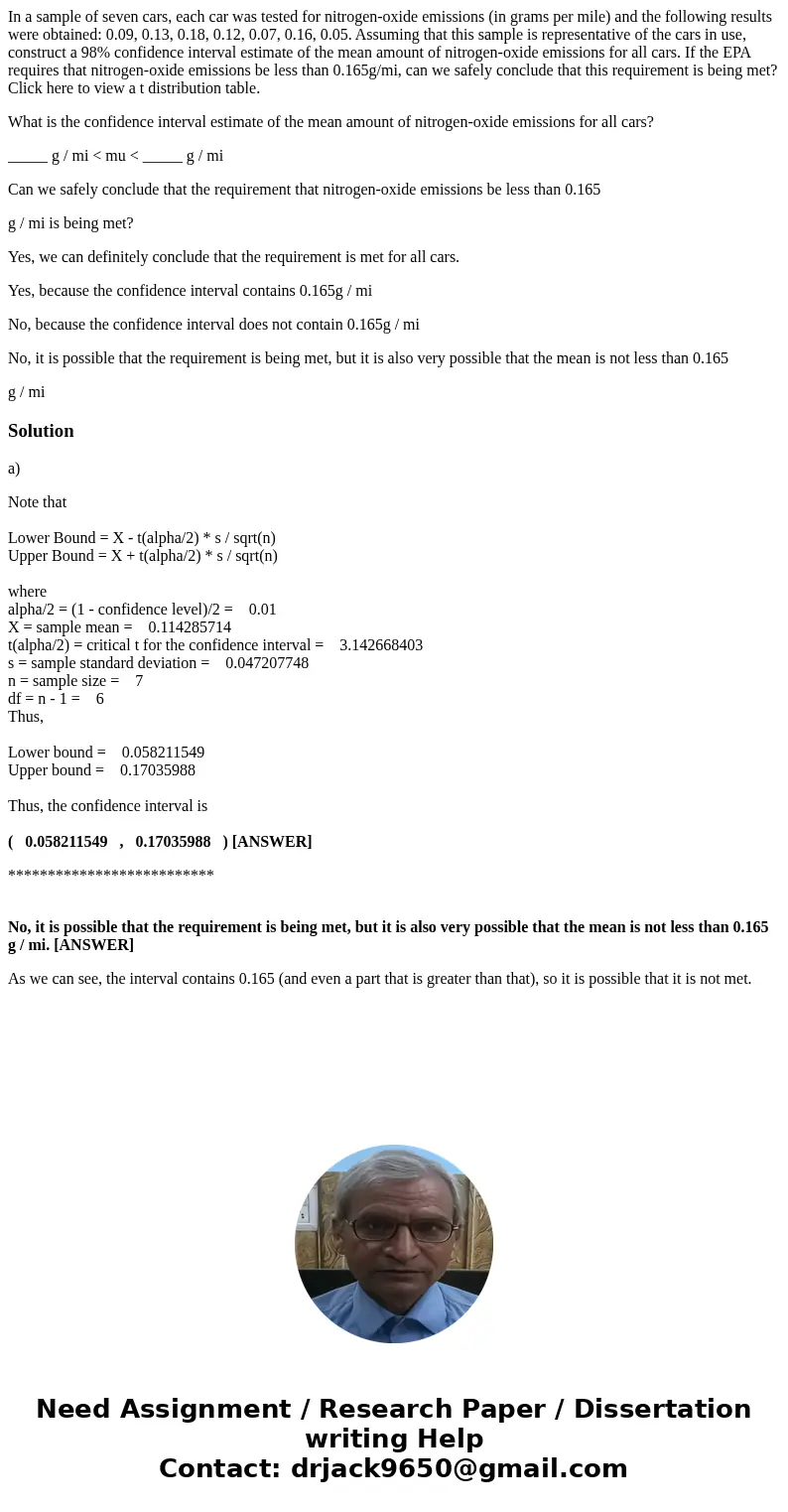In a sample of seven cars each car was tested for nitrogenox
In a sample of seven cars, each car was tested for nitrogen-oxide emissions (in grams per mile) and the following results were obtained: 0.09, 0.13, 0.18, 0.12, 0.07, 0.16, 0.05. Assuming that this sample is representative of the cars in use, construct a 98% confidence interval estimate of the mean amount of nitrogen-oxide emissions for all cars. If the EPA requires that nitrogen-oxide emissions be less than 0.165g/mi, can we safely conclude that this requirement is being met? Click here to view a t distribution table.
What is the confidence interval estimate of the mean amount of nitrogen-oxide emissions for all cars?
_____ g / mi < mu < _____ g / mi
Can we safely conclude that the requirement that nitrogen-oxide emissions be less than 0.165
g / mi is being met?
Yes, we can definitely conclude that the requirement is met for all cars.
Yes, because the confidence interval contains 0.165g / mi
No, because the confidence interval does not contain 0.165g / mi
No, it is possible that the requirement is being met, but it is also very possible that the mean is not less than 0.165
g / mi
Solution
a)
Note that
Lower Bound = X - t(alpha/2) * s / sqrt(n)
Upper Bound = X + t(alpha/2) * s / sqrt(n)
where
alpha/2 = (1 - confidence level)/2 = 0.01
X = sample mean = 0.114285714
t(alpha/2) = critical t for the confidence interval = 3.142668403
s = sample standard deviation = 0.047207748
n = sample size = 7
df = n - 1 = 6
Thus,
Lower bound = 0.058211549
Upper bound = 0.17035988
Thus, the confidence interval is
( 0.058211549 , 0.17035988 ) [ANSWER]
**************************
No, it is possible that the requirement is being met, but it is also very possible that the mean is not less than 0.165 g / mi. [ANSWER]
As we can see, the interval contains 0.165 (and even a part that is greater than that), so it is possible that it is not met.

 Homework Sourse
Homework Sourse